Partners
Coordinated by SINTEF A.S., this consortium is composed of 35 diversified and complementary partners from 11 countries (Norway, Belgium, France, Germany, Greece, Italy, the Netherlands, Spain, Sweden, Estonia and Denmark).
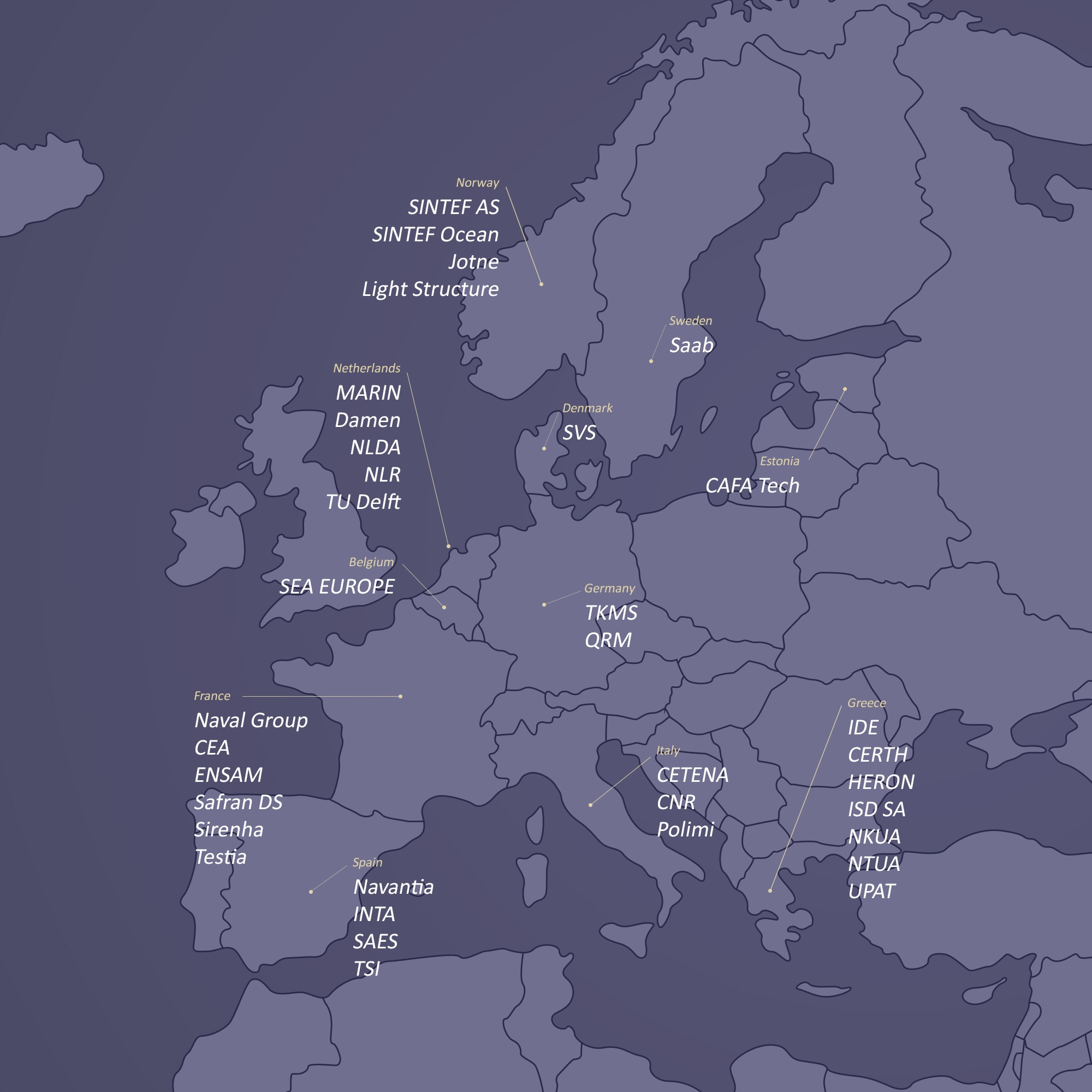

Norway
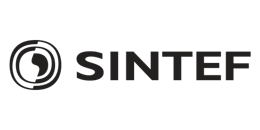
Since 1950, our research has created solutions and innovation for society and for customers aroundthe globe. This has made SINTEF a world-leading research institute. SINTEF is a non-profit research foundation, organised in separate institutes. SINTEF Digital conducts research and innovation in digital technologies and technology-oriented social sciences. Our multi-disciplinary knowledge base is used across all industries and helps our customers exploit and meet the opportunities created by digitalization and digital transformation.
SINTEF Digital has the coordinator role for the dTHOR project and is lead by project manager Trond Kvamsdal. We will provide Digital Twin technology with emphasis on predictive digital twins enabled by reduced order modelling and hybrid analysis and modelling.
Expertise relevant to the project:
- Computational mathematics
- Reduced order modelling
- Marchine learning and AI
- Hybrid analysis and modelling
- Predictive digital twins
- Underwater acoustic and communications
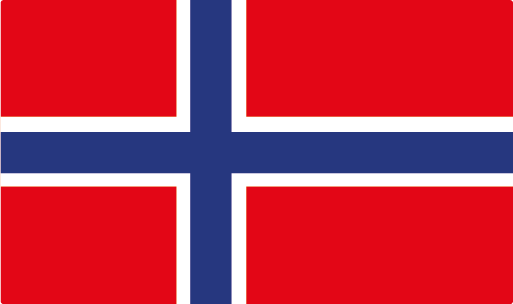

Jotne Connect is the leading provider of Product Data Solutions, based on open standards in the areas of Defense, Aeronautics, Space and Built Environment. Our suite of products has successfully reduced development and product lifecycle costs through the use of intelligent data management in a variety of industries.
Jotne Connect is a leader in the development of standards-based software products specializing:
- Product Data Exchange
- Product Lifecycle Management
- Long-term data & product OAIS archiving
- Data validation & verification, code checking
- Rules based data modeling
- Cross-platform data sharing
Jotne participates in the WP2 – Requirements and specification, WP3 – Digital Framework , WP11 – Dissemination, communication and standardization.


Light Structures AS (LS) is a leading global supplier of structural monitoring solutions providing data enabling optimal operation and maintenance of assets in the maritime and infrastructure sectors.
Since its establishment in 2001, LS focuses on combining innovative fiber optic sensing technologies with state-of-the art software to provide insight to stakeholders in the Navy, Shipping and Offshore sectors. The head office and production facilities are located in Oslo, Norway.
Light Structures leads tasks in dTHOR on the State of the Art (T2.2), Fiber Optic Sensing (T5.4), Digital Subsystems for Condition Based Maintenance (T6.4) and Mission Restrictions (T7.4). The effort is coordinated with T11.6 in EDINAF, providing a SSHM use case for the Operational Control System.


SINTEF Ocean operates some of the worlds' most advanced marine technology laboratories and offer a unique combination of world-class laboratories, software development and engineering competence. Together with our university partner NTNU we form the Marine Technology Centre in Trondheim – the largest research and education centre within marine and maritime technology in the western world.
Expertise relevant to the project
- Hydrodynamic load and response models
- Propeller cavitation, noise, pressure pulses
- SHM of active weapon systems
- Ride Control System (RCS)
- World leading laboratories
- Extensive CFD expertise and –capabilities
- Integrated software for ship design and –performance
- Digital framework/Open Simulation Platform

Belgium

As a project partner, SEA Europe advises on best practices, helps to coordinate, and facilitates communication between project stakeholders. Additionally, SEA Europe is responsible for disseminating project outcomes to relevant stakeholders, ensuring that the project's impact is maximized. With its expertise and experience in project management, SEA Europe is a valuable partner for this project looking to achieve its goals efficiently and effectively.

Denmark
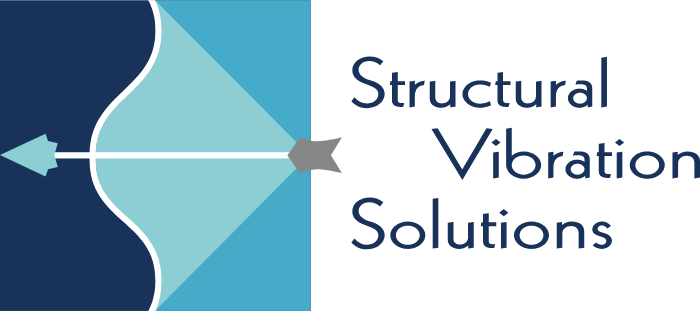
The company started in 1999 as a spin-off from Aalborg University, Department of Civil Engineering. It was founded by Professor Rune Bricker and Dr. Palle Andersen, and its main product is a software platform called ARTeMIS Modal. Today, our 1000+ customers are using the software in various engineering fields where it is vital to know the dynamic behavior of structures subjected to unknown and uncontrollable excitation forces. We have a range of advanced Operational Modal Analysis methods in the software, where the workhorse is our very fast and effective data-driven Stochastic Subspace Identification methods. Our software is sold through our own distribution network under the name ARTeMIS Modal. It is also sold by Hottinger, Brüel & Kjaer as B&K Operational Modal Analysis, and through Dewesoft as Dewesoft ARTeMIS OMA.
In the dThor project our primary role is to perform efficient and accurate extraction of modal parameters from measurements using our software. We will assist with the actual measurements to be performed on laboratory structures and at sea on actual vessels. Finally, we will be doing Operational Modal Analysis and damage detection both in work package 4, and work package 7.
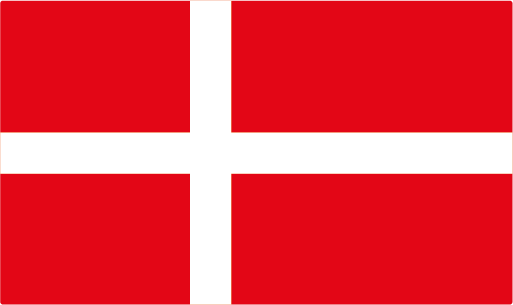
Estonia
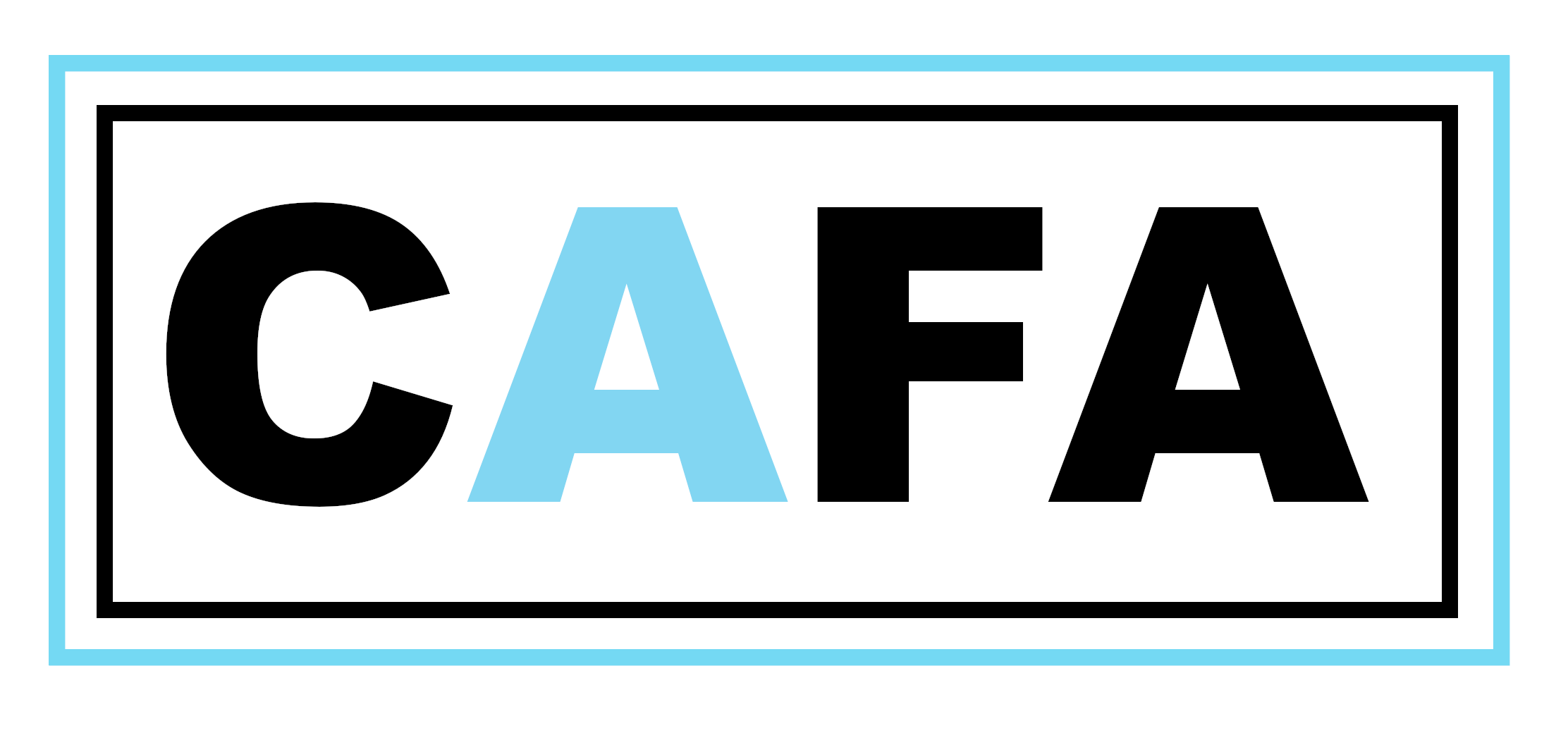
CAFA Tech brings to dTHOR project a wealth of experience in the deployment and integration of UAVs (Unmanned Aerial Vehicles), UGVs (Unmanned Ground Vehicles), and UUVs (Underwater Unmanned Vehicles) into various defense technologies. Modern conflicts have underscored the necessity to keep humans distanced from hazardous situations, underscoring the critical role of unmanned platforms. For situational awareness, both security and defense sectors rely on sensors and radars. The capacity of sensors and radars to generate data far surpasses human capability for real-time analysis and decision-making. Therefore, CAFA Tech´s AI Training Centre is designed to process data from various sensors and radars, optimizing our approach to data-driven decision-making in the defense sector.
CAFA Tech's main focus on dTHOR project:
• CAFA Tech designs cybersecurity solutions, fortifying the ship's condition-monitoring sensors against cyber-attacks from adversaries.
• CAFA Tech designs and develops a communication and networking solution, ensuring sensor data efficiently reaches the onboard high-powered processing computers.
• CAFA Tech performs the tests and demonstrations of the dTHOR digital ship system in Estonia.
Utilizing advanced production capabilities, highly-skilled and experienced personnel and large-scale project management know-how, IDE is a key player in the high technology sector of the Hellenic Defense Industry. Through its participation in domestic and international defense programs, IDE has achieved high levels of local added value and supports the Hellenic industrial sector by allocating considerable contracts to local subcontractors.
Based on IDE’s experience and capabilities, in the context of the dThor project, IDE intends mainly to design a reliable and secure/ cyber secure Physical Data link so as to achieve i) minimization of emissions ii) minimization of the number of wireless nodes to be used in the dThor framework and to test it in real environment.

France
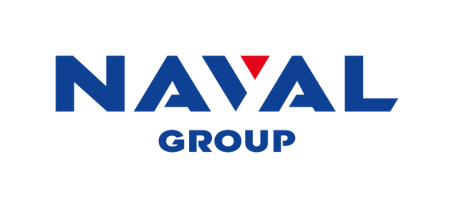
Via its 10 production sites in France, all experts in a key part of the naval defense value chain, and from its international subsidiaries, Naval Group builds a unique range of products and services for each navy. An offer adapted to its own needs and local challenges. Naval Group also offers a wide range of marine renewable energy solutions through its subsidiary, Naval Energies. Committed to exercising its corporate social responsibility, Naval Group adheres to the United Nations Global Compact.
In this project the department “Expertise, Research and Development” (ERD) is involved. It is included in Naval Research, the technological research center of Naval Group, and in the Center of Expertise for Naval Structures and Materials (CESMAN). In particular, it is in charge of the maturity of new materials and their integration in innovative structures of naval systems. Health monitoring in both metallic and composite structures is part of its missions.
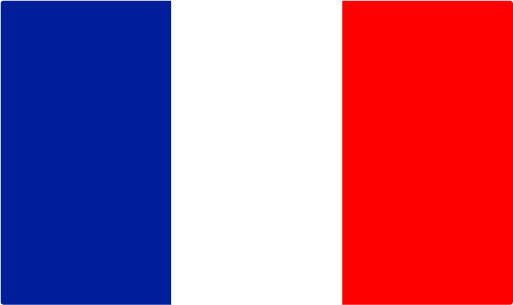
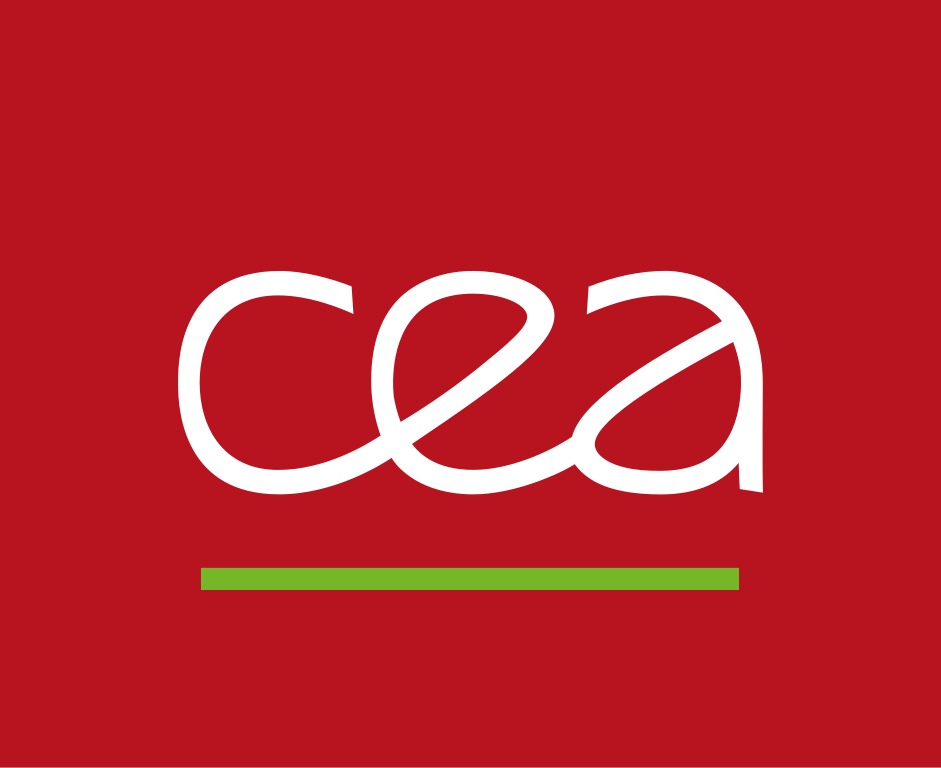
CEA List focuses on advanced manufacturing (robotics, virtual & augmented reality, non-destructive testing, vision), embedded systems (computing architectures, software and systems engineering, security & safety), and ambient intelligence (sensors, instrumentation & metrology, communication & sensory interfaces, data processing & multimedia). By developing cutting-edge technological research, CEA List helps its partners to enhance their industrial competitiveness thanks to innovation and technology transfer.
In dTHOR project, CEA List will support deployment and assessment of dedicated SHM systems in maritime and defense context. The institute will focus on the development of passive guided waves tomography using fiber Bragg gratings, and continuous fiber Bragg measurements

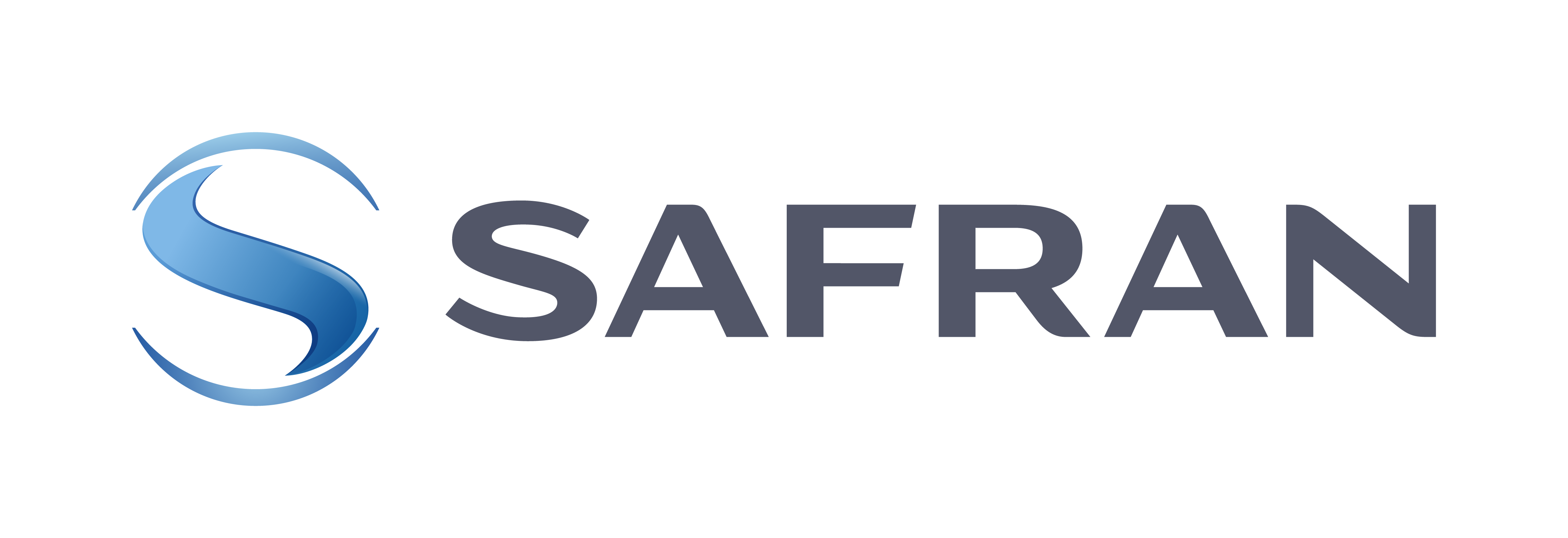
Safran Data Systems, a subsidiary of Safran Electronics & Defense, offers high-technology equipment and solutions for space communications, simulation and testing, as well as aerospace testing & information systems. Based in Europe, India and North America, Safran Data Systems currently employs over 850 passionate people. Safran Data Systems guarantees innovation, unrivaled performance and availability. As a leader in its markets, Safran Data Systems contributes to its customers’ success by offering them long-term support, high reliability, backward compatibility and scalability.
Safran Data Systems will study and prototype a very compact, highly ruggedized, distributed and low power data acquisition system (DAS) dedicated to structural health monitoring in very large structure. The modular concept will allow to acquire a wide set of sensor types with high metrology performance, a high level of time synchronization between numerous DAS, able to apply locally appropriate processing algorithm (e.g. filtering, event detection,…)


With its 15 research laboratories and doctoral school, ENSAM addresses the needs of its industrial partners, in France and abroad, and works to shape the future. The ENSAM scientists are engaged in five major strategic axes: transport, energy, health, housing, and manufacturing. ENSAM shares the same ambition with its industrial partners: initiate collaborative projects that foster the creation of new technologies. Currently, the school contributes to 10 engineering programs dealing with technology design to production and recycling.
ENSAM participates to WP4 – Modelling, to WP6 – CBM of ship hull structure and to WP10 – Use cases technology demonstrations.


SIREHNA is a specialist in the control of the dynamic behaviour of novel devices. Relying on this expertise, the company offers operational and efficient products, such as a dynamic positioning system, unmanned surface vessel, navigation aids and maritime surveillance systems
SIREHNA is a major actor in the multi-field knowledge of naval hydrodynamics, fluid mechanics, experimental technologies, design optimization, modelling of wave propagation, prediction of platforms movements as well as piloting control laws and related embedded systems.
SIREHNA has a Quality Management System certified ISO 9001 since 2012, on the Technocampus site in Bouguenais. We are following a continuous improvement scheme which allows us to satisfy and anticipate the needs of our customers.
Within DTHOR, SIREHNA aims to specify and select Ship Health Monitoring sensors and its associated instrumentation and acquisition system that can be integrated on-board military ships, focusing on metallic hull structure but also on composite structure or appendage. To demonstrate this, SIREHNA will also participate to the test of these sensors on a composite structure application.

Testia is an Airbus company specialized in aerostructure inspections and integrity, aerospace non-destructive testing and Structural Health Monitoring (SHM). Offering a unique portfolio of sensor solutions and services, we are able to gather all monitoring aspects related to damages, loads and environmental conditions, which have a direct influence on a structure. Thanks to our global footprint and to the range of technical capabilities we are able to offer in SHM, including installation and protection of complex sensor networks, operational support and expertise in connectivity solutions & data analytics, Testia is your end-to-end SHM solution provider.
As a contributor in the dTHOR project, Testia focuses on transferring know-how from the aerospace industry to the marine sector. One of the topics we intend to contribute to includes the customization, implementation and testing of sensor solutions, including strain gauges and fiber optic sensors. Backed up by the Airbus data analytics division, we also aim to employ unique algorithms (anomaly detection, fatigue life estimation etc.) to generate useful information about the structure under evaluation.

Germany

Around 3,100 people work at the Kiel site, making it the largest shipyard location in Germany. 185 years of history and the constant striving for improvement allow the company to set new standards time and time again.
TKMS offers its customers worldwide tailored solutions to meet the highly complex challenges of a changing world. The driving forces behind this innovative energy are the company’s employees, who shape the future of TKMS with passion and commitment every day. More information at: www.tkmsgroup.com
Within the dTHOR consortium TKMS contributes its vast experience in the field of innovative system development.
Responsible for the work packages “Battle damage and structural integrity” and “Weapon system accuracy” as well as a partner in other relevant work packages, TKMS actively supports the development of a European standard for the next generation Ship Structural Health Monitoring system.
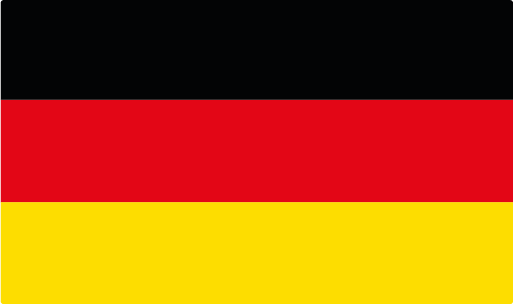

In aerospace, we offer comprehensive services in design, development, and process improvement. Similarly, in shipbuilding, our team excels in optimizing processes for superior vessel construction. Leveraging AI and ML technologies, we provide advanced digital transformation solutions that streamline operations and automate processes, unlocking valuable insights. With QRelation, you can achieve effective planning and realize your strategic objectives. As the driving force behind your visions, we combine engineering expertise, management capabilities, and digital transformation solutions to deliver tangible results. Partner with QRelation today and unlock the full potential of your projects.
QRelation is involved in two Work Packages of the dTHOR project, and our role consists of handling and connecting data in the whole digitalization process. We are dedicated to connect and unravel complex data structures in order to extract insights for smarter decision-making on naval ships.

Greece

Moreover, IDE invests an important percentage of its annual turnover in new technologies and participates in joint multinational R&D and production programs, in cooperation with major international defense system companies. The company retains its international recognition through the long standing participation in European and NATO new technology development programs.
Utilizing advanced production capabilities, highly-skilled and experienced personnel and large-scale project management know-how, IDE is a key player in the high technology sector of the Hellenic Defense Industry. Through its participation in domestic and international defense programs, IDE has achieved high levels of local added value and supports the Hellenic industrial sector by allocating considerable contracts to local subcontractors.
Based on IDE’s experience and capabilities, in the context of the dThor project, IDE intends mainly to design a reliable and secure/ cyber secure Physical Data link so as to achieve i) minimization of emissions ii) minimization of the number of wireless nodes to be used in the dThor framework and to test it in real environment.


CERTH’s five (5) institutes carry out research within the primal fields of climate change, sustainable energy, artificial intelligence, advanced robotics, Internet of Things, holistic approaches to healthcare and nutrition, transportation, autonomous vehicles, smart cities of the future and circular economy.
CERTH contributes to the project on WP2, 5 and 6 as an expert in the development of an Acoustic Emission structural health monitoring system, capable of detecting and recognising crack generation on noisy environments such as ship hulls. In addition, CERTH is overlooking the requirement analysis for data pre-processing, processing, and post-processing, that will be used for condition based maintenance systems of naval vessels.

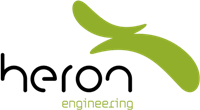
The main product and service areas are the following:
1. Mechanical Design and Analysis for systems/subsystems or equipment;
2. Structural Analysis using FEM for systems/subsystems or equipment;
3. Thermal Analysis for systems/subsystems or equipment;
4. Development of tools, from design to manufacturing (via reliable partners) of jigs, special equipment (e.g. MGSEs);
5. Research and development of modeling techniques.
6. Collaboration with partners for manufacturing activities.
Heron’s mission is to assist to the development of high-end products via adequate design and analysis. Project management, system engineering, quality assurance and all relevant engineering tasks are performed at Heron.
Team members are holding engineering degrees with a background in aerospace and mechanical engineering. The team has knowledge and experience in composite and metallic structures design, stress and thermal analysis, Computational Fluid Dynamics (CFD), materials selection, testing and qualification.
As a company with expertise in Finite Element Modeling. our contribution is primarily oriented around the structural analyses and simulation of vessel’s behavior under different conditions and health states. Additionally, methods for the development of Reduced Order, Surrogate Models or Model Updating, depending on the task at hand, are utilized for the efficient generation of synthetic data -vital for the implementation of a functional Ship Structural Health Monitoring System.


ISD SA is an independent organization developing Integrated Systems. The company focuses mainly on Aerospace, Naval and Defense activities. Provided services range from SW development for embedded and general-purpose platforms, to digital and analog / RF integrated circuit design. Furthermore, ISD acts as a broad based original electronic equipment developer and integrator and is heavily involved in systems design, digital signal processing for embedded/stand-alone applications as well as PCB design and system integration.
ISD established in Greece in 1998 with its headquarters in Maroussi and branches in Glyka Nera and Crete. Internationally, ISD has presence in France, Italy and Ireland.

Committed to the vision “Space Technology Designed in Greece”, DSCAL/NKUA developed state-of-the-art FPGA hardware accelerators implementing Consultative Committee for Space Data Systems (CCSDS) recommended standards. DSCAL/NKUA can provide cutting-edge technology high-speed hardware accelerator IP Cores for CCSDS real-time data and image compression for monoband and hyperspectral optical payloads, synchronization and channel coding for telecommunication (RF and optical) payloads applicable to LEO direct-to-Earth (DTE), lunar DTE and optical ISL communications, as well as, authenticated encryption targeting space-grade and COTS FPGAs. DSCAL currently participates on ESA institutional space missions (PROBA-3, TRUTHS) and two CubeSat missions of the Greek CubeSats In-Orbit Validation/Demonstration Project and several R&D projects funded by ESA, Greece and EU, developing reliable and high data-rate performance FPGA accelerators.
NKUA participates in the study and implementation of efficient channel coding and synchronization for the dTHOR wireless networking infrastructure. 5G New Radio (NR) is a versatile wireless technology suitable for a wide range of applications providing an unmatched combination of high-speed data transmission, low-latency communications, and reliability. NKUA team will study and implement an FPGA accelerator for Forward Error Correction based on low-density parity check (LDPC) as defined in 5G NR, leveraging its world-wise expertise on hardware acceleration of LDPC-based channel coding algorithms.


The group performs research in all three main pylons of SHM, i.e. diagnostics, prognostics and load identification by employing and developing SHM architectures that involve limited number of sensors and smart physics-based and data-driven methods. Uncertainty quantification for risk assessment is central in the group’s research agenda. Fatigue cracking, corrosion induced thickness loss and unwanted plate deflections are specific damages of interest. With a special focus in strain sensing, the group aims at constructing structural digital twins that will support the transformation from preventive to predictive maintenance schemes in the shipping industry. Therefore, dTHOR project is of strategic importance for the group.
NTUA with the ship-hull SHM group is actively involved within the construction of physics-based and data-driven models for parameter calibration and updating as well as optimal sensor placement for the aims of damage diagnostics, load identification and condition-based maintenance.


The University of Patras was founded in the city of Patras in 1964 and started to operate in academic year 1966-1967. The University is situated in Patras, Agrinion and Messolonghi. The main campus is located 7 km North East of the city of Patras, in the suburb of Rion, covering a vast area of 4.5 km². The campus lies on the foothills of Mount Panachaico with a view over the Corinthian Gulf and to the mountains of Central Greece across the sea. The University of Patras is the third largest University in Greece in terms of students, faculty members, administrative personnel, number of departments and degrees awarded. The University of Patras includes 35 Departments covering a wide range of disciplines. It also hosts 161 laboratories and 17 fully equipped clinics. Besides its distinguished path in education, the University of Patras excels in various fields of basic and applied research. The University of Patras has acquired international prominence in research areas such as Health, Environment, Biotechnology, Mechanics, Electronics, Informatics and Basic Science. A number of its academic Departments, laboratories and clinics have been recognized as centres of excellence on the basis of international assessment. The University of Patras has acquired a reputation for producing quality and innovative research and for taking part in a plethora of research projects, scientific organizations and research groups. Together with its educational and research work, the vibrant campus life of the University of Patras attracts many students every year as their first and foremost choice for Higher Education studies.
In the dThor project, AML/UPAT has a multi-dimensional role. We contribute to the development of diagnostic and prognostic data-driven algorithms, leveraging probabilistic models and machine learning techniques in Work Packages 6 and 7. Simultaneously, we optimize the placement of vibration sensors on ship structures in Work Package 5 and provide crucial support to the Integrated Systems Demonstrator (ISD) concerning fiber Bragg grating (FBG) strain sensing. Our primary objective is to transfer AML/UPAT's aeronautical SHM expertise into the maritime structures domain, fostering collaboration with project partners to advance methodologies and elevate Technology Readiness Levels (TRLs).

Italy

CETENA manages each of these activities with its team of experts with professional competences, knowledge and experience. CETENA also collaborates with different research centres in Italy and Europe and it is involved in many research projects with Universities, Ministries and industrial companies.
CETENA participates in the WP1 – General management and coordination of the project, WP2 – Requirements and specification , WP3 – Digital framework , WP4 - Modelling, WP5 – Sensor selection, WP7 – Battle damage and structural integrity, WP8 – Hydro-acoustic signature control,
WP10 – Use cases and technology demonstrations.


The institute operates mainly in the areas of Industrial Engineering and Applied Mathematics on issues concerning the development of traditional and autonomous naval vessels, marine robotics, port and coastal logistics, renewable energy from the sea, environmental and underwater acoustics, sensors and intelligent energy management.
CNR-INM is collaborating in dTHOR in both enabling technology (WP4-5) and application technology (WP6-7-8) work packages. Main contributions will cover solutions for digital twinning and sensor technology, damage identification techniques exploiting the use of AI, hydroacoustics models for predicting URN from on-board sensors. CNR-INM will be in charge of defining, planning and hosting the experimental campaign on the scaled demonstrator in its towing-tank facility in Rome within WP10.


Politecnico di Milano is a leading university in the mechanical and aerospace sectors. The Department of Mechanical Engineering strategic research areas include system dynamics, road vehicles, measurement systems, manufacturing, production, Structural Health Monitoring and structural integrity assessment. The Machine Design section of the department is among the top research groups in Health and Usage Monitoring Systems, having led model-based Structural Health Monitoring and Prognosis in the past 10 years.
The department has been involved in several European projects in the SHM framework, such as HECTOR, ASTYANAX, ISSA, SAMAS, ENHAnCE, and SAMAS II. The laboratories state-of-the-art technologies provide the capabilities to perform experiments in the fields of additive manufacturing, 3D Vision, cable dynamics, material analysis and testing, impact and crash tests, non-destructive tests, measuring devices and calibration, metallurgy, railway engineering and vechicle dynamics.
POLIMI’s Department of Mechanical Engineering (DMEC) is involved in several WPs as task leader. POLIMI-DMEC will perform high fidelity Finite Element Analysis in WP4. POLIMI-DMEC will implement inverse FEM strategies for usage monitoring, apply Artificial Intelligence and Discrete Event simulations to optimize maintenance policies and provide life-cycle cost assessment in WP6. POLIMI-DMEC will fuse human expertise and sensors data, and will predict damage progression in WP7. POLIMI-DMEC will establish validation requirements and indicate probable error sources in WP10.

Netherlands

We offer integrated solutions, from concept development and design to operation, making optimal use of our test facilities, computer simulations, simulators and full-scale measurements. In developing, applying and sharing our knowledge, we stimulate innovation and global collaboration. The knowledge and involvement of our people are our strength.
MARIN will work on developing more effective and cost-efficient structural health monitoring systems. These developments include design of multi-sensor systems and better capitalization of monitored data using physical and data-driven models. In these efforts, MARIN is building upon experience obtained from multiple long-term monitoring campaigns onboard ships in active service.


With roots stretching back almost 150 years – to the Royal Schelde yard in Vlissingen – Damen Naval is the only naval original equipment manufacturer (OEM) in the Netherlands. Having delivered more than 400 vessels to customers all around the world, we are a trusted partner in the international marketplace, known for our role as full-service provider, or integrator, throughout the lifecycle of our products. While taking pride in our heritage, we are looking towards the future.
Damen participates in the dTHOR project by leading the Condition-Based Maintenance (CBM) system prediction task. Moreover, Damen will study the expected fatigue and extreme loads that the vessel may encounter under normal operation and damage scenarios, by means of seakeeping analysis and innovative approaches. With this, Damen aims to acquire deeper knowledge that could be used to increase the operability and longevity of the platforms and to use this feedback into the design process.


The Netherlands Defence Academy (NLDA) is part of the Dutch Ministry of Defence, and provides the (scientific) educational programs for future officers at the Navy, Army and Airforce. In addition, a range of scientific research programs is executed in technical, economic and strategic domains, both supporting the educational programs and offering knowledge and insights to the operational and support commands at the MoD.
The research in the technical domain is focusing on topics like Smart Maintenance and Life Cycle Management, Health and Condition Monitoring, Systems Integration, Alternative Fuels & Reduced Emissions, Unmanned Systems, Operational Analysis and Operational ICT. Research projects are always in close collaboration with the various stakeholders within the MoD, and with relevant industrial partners.
In the dTHOR project, the NLDA contribution is in the field of Corrosion Monitoring & Management. A previously developed sensor concept for protective coating health assessment based on electrochemical impedance spectroscopy (EIS) will be further developed (WP5). In addition, application of the sensor in monitoring coating degradation processes under various circumstances will be explored, ultimately aiming to assess the coating remaining useful life time. This prediction will then be used in the development of a condition based maintenance policy (WP6).

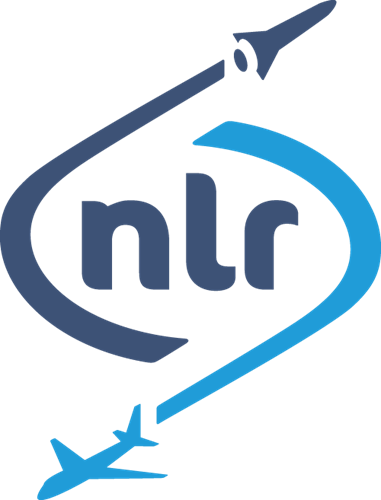
NLR covers the whole RDT&E (Research, Development, Test & Evaluation) range, including all the essential phases in research, from validation, verification and qualification to evaluation. By doing so, NLR contributes to the innovative and competitive strength of government and industry, in the Netherlands and abroad.
Within dTHOR, NLR’s structural integrity department (AVIL) is going to apply it’s long experience in the application of fibre optic sensors for structural health monitoring (SHM) in aviation to the naval domain enabling simultaneous loads and impact monitoring on naval ships. To this, a dedicated optical sensor network will be designed. Additionally, direct (e.g. optical sensors) and indirect corrosion sensing techniques will be studied for their applicability for naval use and analysed for application in a Condition-Based Maintenance system. Both the SHM and corrosion sensors will be applied in the ship demonstrator.


For the dTHOR project, the research is coming from the Maritime and Transport Technology section. Building on our disciplinary strengths we develop solutions addressing UNESCO global challenges relating to rapid urbanisation, growing energy demand, increasing air pollution, climate change, and raw material shortage.
It is our mission to address these global challenges by:
- expanding the frontiers of the maritime and transport engineering sciences
- educating new generations of socially responsible engineers
We work along seven themes that are founded in the more fundamental areas of research on the one hand, and have clear links to relevant application
domains on the other.
TU Delft is working on the definition of a condition-based maintenance system and how the addition of corrosion monitoring can further improve structural health estimates.

Spain

Navantia has a shiprepair line of activity that goes from regular repairs to refurnishment programmes, including conversions. The company has the facilities and know-how for complex repairs comprising LNG’S and Cruisers. Navantia has Fleet Maintenance Agreements with the most important ship-owners in the world. Additionally, Navantia has also taken steps towards diversification and has become a relevant actor in the area of offshores wind power, as a reference manufacturer of floating structures, jackets and electric substations. Navantia is also successfully delivering the conventional submarine most advanced in the world, S-80.
Navantia is the National Leading company and main Spanish partner also leading the Digital Framework workpackage. Navantia shares its knowledge and experience on structural calculation and digital twinning in several naval platforms included in our portfolio to contribute in this common effort, participating not only in specifical WP related with digital model but in many others WPs as battle damage and structural integrity; weapon system accuracy and hydro-acoustic signature control. Additionally, Navantia takes the role to ensure there is good communication among all the Spanish entities and with Spanish Ministry of Defence to ensure consistency and alignment of the deliverables with MODs needs and requirements in all the deliverables and getting Spanish MOD input through the project execution.
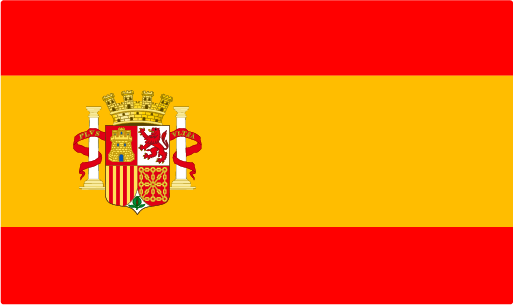
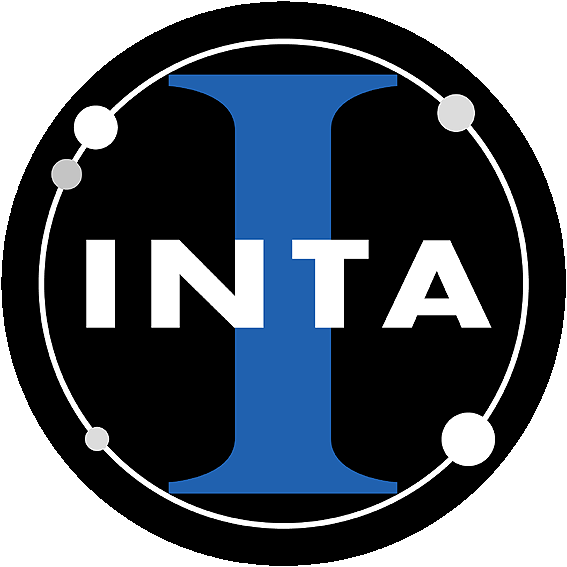
Its main functions include:
- The performance of various types of tests for the testing and certification of materials, components, equipment, systems and subsystems.
- Technical advice and the provision of services to official bodies and organisations, as well as to industrial or technology-based companies.
- Acting as a technology centre for the Ministry of Defence.
INTA participates in the WP2 – Requirements and specification, in the WP4 - Modelling, in the WP5 – Sensor selection, and the WP10 – Use cases and technology demonstrations.


SAES was founded in 1989. Since then, SAES has established itself as a company specializing in underwater acoustics and electronics, developing systems for security and defense. SAES solutions incorporate the latest technologies and advances in the following fields:
· Sonars and systems on board submarines and ships.
· ASW solutions for air, naval, and ground support platforms.
· Measurement and control of multi-influence submarine signatures.
· Multi-influence systems (acoustic, magnetic, electric, seismic, and pressure) such as naval exercise mines and signature measurement stations.
· Acoustic classification and signature intelligence.
· Equipment for maritime protection and surveillance.
· Simulators and systems for training.
Solutions are designed to adapt to the requirements of each program, platform, or scenario, both in the defense market and the civil market, serving numerous Navies and other organizations worldwide
In addition to equipment, SAES provides engineering services, specialized technical support, maintenance, and has training and education programs. These services are provided by highly experienced and trained engineers and professionals in various disciplines such as electronics, acoustics, systems engineering, software and hardware development, among others.
SAES participation focuses on three main areas: modelling, sensor selection and hydroacoustic signature control. Modelling improves ship transfer functions by analysing and studying vibroacoustic transfer functions and uderwater radiated noise. Sensor selection provides appropriate sensor technologies to detect specific degradation processes and failure mechanisms. For hydroacoustic signature control, a HAM application will be developed to process the known ship operating condition data and predict the expected far-field underwater radiated noise. In addition, the conceptual design of a monitoring system will be developed based on a practical methodology to estimate the acoustic signature from data collected by a structural monitoring system.


TSI gathers more than 33 years of experience and more than 2.000 referenced studies related to these activities in the Marine, Industrial and Power Generation sectors. TSI is ISO 9001 (2015) certified, as well as DNVGL, UKAS and RvA, BV, and also DMA certified for N&V Measurement and Prediction.
Its understanding of the whole ship industry value chain, together with its technical expertise , has allowed TSI to deliver a high expertise in structural dinamic calculations for both vessels and off-shore platforms, provide reliable support on vessels and platforms construction processes, as well as monitoring for different maintenance strategies accroding to our customer needs.
TSI will bring its expertise in structural design of ships, structural health monitoring of complex marine structures and underwater noise management to participate in key tasks of the project, more specifically those related to:
a) Definining the requirements for SSHM.
b) Identify and propose the most suitable set of sensors for SSHM
c) Elaborate on the most adequate strategies for Hull CBM.
d) Management of Underwater Radiated Noise of Navy Vessels.

Sweden

With over 80 years of industry experience, Saab has renowned expertise in delivering platforms, combat systems and sub-systems for the entire naval domain. All naval products and services in the Saab family have an origin in the context of a contested sea. A highly demanding setting with a high clutter environment and a military geography that generates large variations and highly compressed tactical situations, which constantly challenges you. From the littorals, Saab has reached the blue oceans with customer navies from different continents and is a trusted partner enrolled for the long run. Whether fully integrated or as stand-alone solutions, they are all expertly created and fully supported to deliver optimal operational effect. Here’s our complete offer within the naval domain: https://www.saab.com/products/naval
dTHOR includes many extremely talented people and organizations with highly specialized knowledge. At Saab we can only hope to add marginally to these competences. However, with a bird’s-eye view, contacts and resources of a larger defense corporation, we may direct and help other partners to achieve their best. This is a common theme for Saab’s roles in many dTHOR work packages; From the “requirements and specifications” in WP2 to the WP10 lead for “technology demonstrations”.


